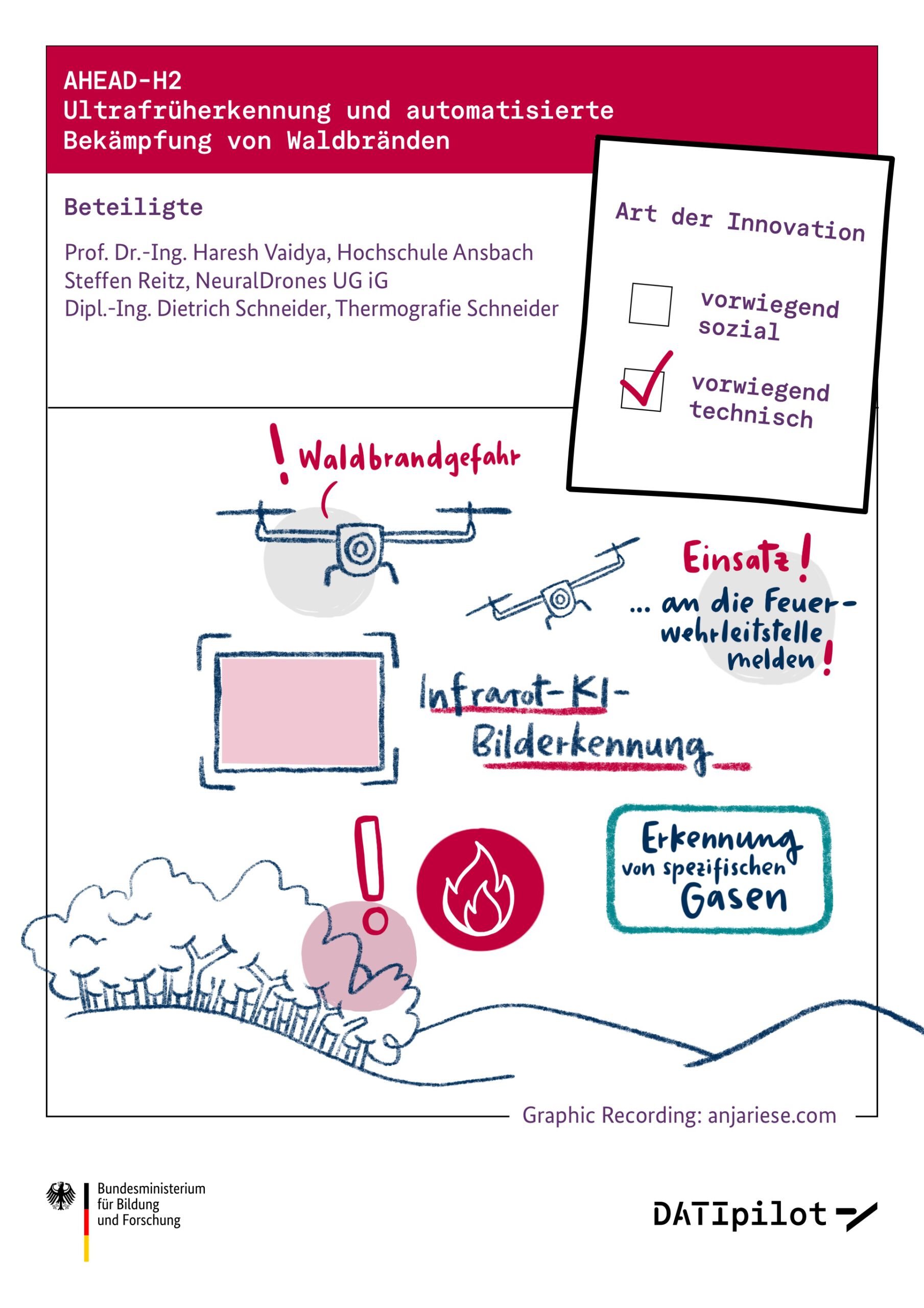An early warning system for forest fires
Development of an innovative solution possible thanks to BMBF funding
‘The increasing threat of forest fires requires innovative approaches to prevention and early detection. The main aim of the project is to develop an autonomous monitoring system for the ultra-early detection of forest fires. For this purpose, an intelligent sensor network will be implemented that can identify potential fire hotspots using computational fluid dynamics (CFD) simulations and current wind data. This information is then forwarded to a drone equipped with advanced image processing and AI algorithms. The drone autonomously monitors the surroundings and reliably recognises signs of forest fires,’ says Professor Vaidya, the idea behind the project.
Supported by the BMBF’s DATIpilot funding programme, the ‘AHEAD-H2’ project is developing an innovative solution for the early detection of forest fires. DATIpilot aims to simplify, accelerate and improve funding processes for social and technological innovations. It offers a straightforward application process, new selection procedures and co-creative processes.
Under the leadership of Professor Vaidya, Ansbach University of Applied Sciences is responsible for developing the sensor network and carrying out the CFD simulations. The gas sensors are specially trained for typical forest fire gas signatures. Suitable sensor networks and data transmission systems are identified and validated through simplified field tests. Models for wind simulations and gas transport will also be determined through field tests. Finally, the interface between the sensor network and the drone will be defined.
NeuralDrones UG, headed by Steffen Reitz, is focussing on the integration of the drone technology into the system. An automated triggering of the drone by the sensor network is implemented and a system for the automated approach to the transmitted GPS coordinates is developed. The precise localisation of the danger zone is carried out by AI-based evaluation of the RGB and thermographic image data, the results of which are transmitted to the control centre in real time. The reliability and efficiency of the drone technology will be tested under various environmental conditions.
The ‘AHEAD-H2’ project impressively demonstrates how innovative solutions to global challenges can be developed through collaboration between science and industry. The use of drones and AI for the early detection of forest fires not only improves the efficiency of forest firefighting, but also makes a significant contribution to environmental protection.

